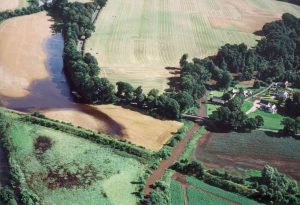 I
I
On Tuesday 29th November 2016 David Woolliscroft has been invited to give a talk on “How far north did the Gask System extend (and when)?” as part of the University of Durham’s Birley Lectures which are organised together with Hatfield College.
For the occasion, he decided to bring together a lot of his research in the last three years away from the Inchtuthil site. These are his current summary of the lecture:
“For the lecture I wanted to pick something that was relevant to Eric Birley (and my personal memories of him), but which also fitted in with the Roman Gask Project’s latest research. I thought that something along the lines of “How far north did the Roman Gask system extend (and when)?”
It would start with Eric’s prescience over a pre-Agricolan date for Carlisle, which has since been fully vindicated, and seems to extend far more widely to sites in the north of England. Rather less noticed, however, he also speculated that this early activity might extend much further north. In the last two decades, a number of scholars have returned to this view, and evidence from the Roman Gask Project that some of the Flavian sites in Scotland seemed to have longer than expected service lives provided added support. That said, in the last few years, evidence has begun to emerge that the picture may actually be more complex, with signs that the Gask system may extend further north than believed, that Antonine activity may be more extensive than we expected to the north of the Antonine Wall, and finally that the Gask road, which was thought to be the fundamental anchor of the Flavian system, may not be Flavian at all.”
Andrew Tibbs, Organiser of the Birley Lectures, said the following about the scope of these lectures in the Michaelmas Term in Durham:
“We’ve just launched the programme for the Birley Lectures on Roman Britain, taking place throughout Michaelmas Term at Hatfield College. The first lecture is being given by Prof Antony Birley on ‘The Young Eric Birley’, former Master of the College and Head of Archaeology at Durham.
Other speakers include David Breeze, David Woolliscroft, and Richard Hingley.
Everyone’s welcome, but seating is limited. Hope to see some people there.”
The Lectures will take place in the Birley Room in Hatfield College, Durham.

 I
I